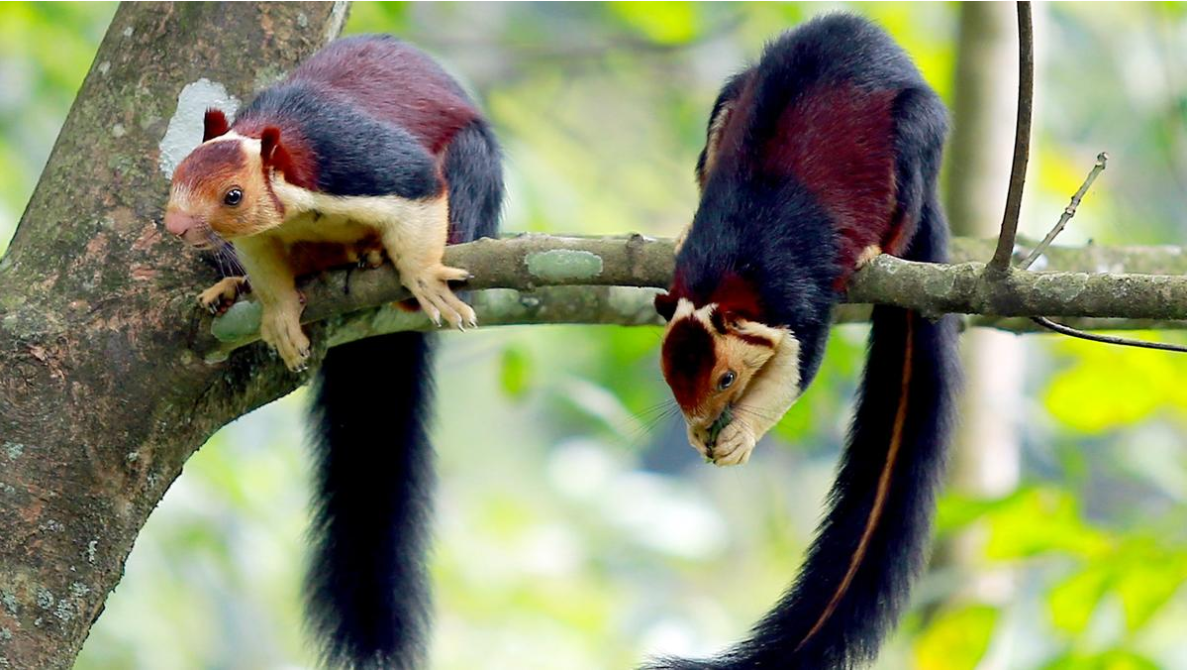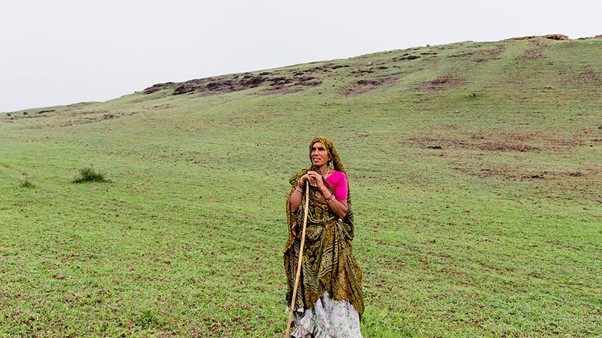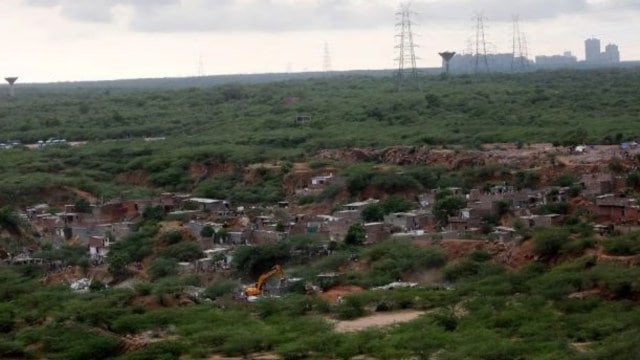Description
Copyright infringement not intended
Picture Courtesy: The Hindu
Context:
Farmers in Kerala’s hilly regions (Idukki, Kottayam, Pathanamthitta, Ernakulam) are increasingly troubled by smaller animals, not traditional predators. Wild elephants, leopards, and tigers are now less of a concern compared to species like Bonnet Macaques, Malabar Giant Squirrels, and wild pigs.
Details:
Causes of Human-Wildlife conflict:
- Loss and Fragmentation of Natural Habitats: Widespread deforestation, large-scale rubber plantations, and expanding human settlements have broken up continuous forest areas. This fragmentation disrupts the natural movement and migratory routes of wildlife, forcing animals into human-inhabited zones.
- Encroachment of Forest: With agricultural activities spreading closer to forest edges—and in some cases into the forest itself—farmers and wild animals are coming into more frequent and direct contact, increasing the likelihood of conflict.
- Impact of Invasive Plant Species: The introduction and spread of non-native plants such as Senna spectabilis and Eucalyptus have reduced the availability of native vegetation and water sources inside forests. As a result, animals venture out in search of food, often targeting crops in nearby farmlands.
- Growth in Wildlife Populations: Improved conservation measures have led to an increase in certain wildlife species. While ecologically positive, this population growth has heightened competition for limited forest resources, pushing more animals toward human settlements.
- Attraction to Commercial Crops: Farmers are increasingly growing high-profit crops like coconut and plantain, which are highly appealing to many wild animals. These crops act as easy food sources and become hotspots for frequent wildlife raids, leading to significant losses for farmers.
Impact on Farmlands:
- Bonnet Macaques: Steal fruits, destroy saplings, and devastate crops.
- Malabar Giant Squirrels: Damage tender pods and farm produce.
- Wild Pigs: Dig up roots, damage field boundaries, and destroy entire plots.
Impacts of Human-Wildlife conflict:
- Financial Strain on Farmers: Small and marginal farmers suffer major crop losses due to wildlife raids. Animals such as wild boars, macaques, and squirrels destroy valuable produce including plantains, coconuts, coffee, and paddy, leading to serious economic setbacks for already vulnerable households.
- Risk to Human Life and Safety: Certain species—particularly wild boars and aggressive monkey troops—pose direct physical threats to people. Their unpredictable behaviour has created a climate of fear in rural areas, especially among those living close to forests.
- Declining Public Support for Wildlife Protection: Frequent negative encounters with wildlife foster resentment among local communities. This can weaken public backing for conservation programs and sometimes result in retaliatory actions against animals, undermining broader ecological goals.
- Mental and Emotional Burden: Living under constant threat of crop damage or attacks leads to chronic stress for farming families. The need for round-the-clock vigilance to safeguard both lives and livelihoods takes a significant psychological toll on communities.
Strategies to mitigate Human-Wildlife conflict:
- Restoring and Managing Wildlife Habitats: Conserving and rehabilitating natural habitats is key to reducing animal movement into human settlements. Efforts can include developing wildlife corridors, designating protected areas, and adopting eco-friendly land-use methods that allow wildlife to thrive within forested regions.
- Safeguarding Crops and Farmlands: Farmers can minimize crop losses through practical protective methods such as installing fences, using noise or light deterrents, and diversifying crops to reduce the attractiveness of farmlands to animals. These strategies help shield agricultural lands from wildlife raids.
- Establishing Early Warning Systems: Introducing systems that detect and communicate the presence of wild animals near villages or farms—such as mobile alerts, watchtowers, or sensor-based technologies—can give communities time to act and prevent harmful encounters.
- Involving and Educating Local Communities: Raising awareness about wildlife behaviour and the benefits of conservation can foster coexistence. Training programs and outreach activities can equip local residents with skills to manage conflicts calmly and reduce fear or hostility toward animals.
- Creating Rapid Response and Support Systems: Setting up specialized teams or helplines dedicated to addressing wildlife-related emergencies ensures that issues are handled quickly and effectively. These systems provide timely support and help defuse tense situations before they escalate.
Technological solutions to mitigate Human-Wildlife conflict:
- Early Warning and Alert Systems
- GPS & Radio Collars: Tracking devices fitted on elephants, tigers, or leopards help forest officials monitor animal movements in real time and alert nearby communities.
- Geofencing: Virtual boundaries can trigger alerts when a collared animal crosses into human territory.
- SMS Alerts & Mobile Apps: Communities receive automated alerts through SMS or dedicated apps when animals approach villages or farms. g: Tamil Nadu’s elephant tracking and SMS alert system has significantly reduced surprise encounters.
- Physical Barriers and Deterrents
- Solar-Powered Electric Fencing: Widely used to deter animals like elephants, wild boars, and deer from entering fields.
- Laser and Sound Repellents: Devices that emit light, sound, or predator calls to scare away animals without harming them.
- Automated Flashlights & Motion Sensors: Triggered by animal movement, these serve as non-lethal deterrents.
- Data and AI-Driven Solutions
- Conflict Prediction Models: Using AI/ML to analyse data (season, crop cycle, animal behaviour) and predict where and when conflict is likely.
- Crowdsourced Databases: Apps and platforms where locals can report animal sightings to help build real-time conflict maps. E.g.: WII’s (Wildlife Institute of India) elephant movement maps based on AI-predicted patterns.
- Community Engagement Platforms
- Mobile Apps (e.g., HWC Mitra): Allow villagers to report wildlife sightings, crop damage, or attacks, improving response time.
- Two-Way Radios: Used in remote forest villages for real-time communication with forest staff.
Government measures to address Human-Wildlife conflict:
- Wildlife Protection Act, 1972: This foundational legislation provides a legal framework for conserving wildlife in India. It includes strict regulations against hunting, mandates the protection and management of wildlife habitats, and facilitates the creation of national parks, sanctuaries, and other protected areas.
- Biological Diversity Act, 2002: Aligned with the United Nations Convention on Biological Diversity, this act ensures the conservation and sustainable use of India’s rich biological resources. It supports other environmental laws, reinforcing the legal protection of forests and wildlife.
- National Wildlife Action Plan (2002–2016): This policy framework aimed to strengthen protected areas, safeguard endangered species and their habitats, regulate illegal wildlife trade, and promote research, education, and capacity building in wildlife conservation.
- Project Tiger: Launched in 1973 as a centrally sponsored initiative, Project Tiger focuses on conserving the Bengal tiger and its ecosystems. It supports the establishment of tiger reserves and works to reduce threats to tiger habitats.
- Project Elephant: Initiated in 1992, this scheme is designed to protect elephants, their migration corridors, and habitats. It also aims to address issues like human-elephant conflict through habitat improvement and community participation.
- National Disaster Management Authority (NDMA): While primarily focused on disaster risk reduction, NDMA also includes guidelines for integrating conflict mitigation strategies into government development plans—particularly in regions prone to human-animal conflict due to natural habitat disruptions.
Conclusion:
Human-wildlife conflict in Kerala’s hilly regions is becoming increasingly complex, marked by a shift from large predators to smaller yet highly destructive species like macaques, wild pigs, and squirrels. This change is largely driven by habitat fragmentation, agricultural expansion into forest areas, invasive plant species, and changing crop patterns that attract opportunistic animals. The consequences are severe—ranging from economic losses and safety risks to psychological stress and a decline in local support for conservation efforts.
To address these challenges, a combination of strategies is essential. These include habitat restoration, crop protection measures, early warning systems, and active community involvement. Government initiatives such as the Wildlife Protection Act, Project Tiger, and Project Elephant form the legal and institutional backbone for conflict mitigation, while national plans and frameworks continue to guide conservation efforts.
Source: The Hindu
|
Practice Question
Q. “Technology can play a vital role in early detection and prevention of human-wildlife conflict.”
Discuss with examples how technological solutions can be integrated into conflict mitigation frameworks in rural and forested regions.
|
Frequently Asked Questions (FAQs)
Human-wildlife conflict occurs when wild animals cause damage to human life, property, or livelihoods, or when human activities threaten wildlife, leading to negative interactions between the two.
Major causes include habitat loss and fragmentation, expansion of agriculture into forest areas, increasing wildlife populations due to conservation, invasive species, and changes in cropping patterns that attract animals.
Bonnet Macaques, Malabar Giant Squirrels, and wild boars











